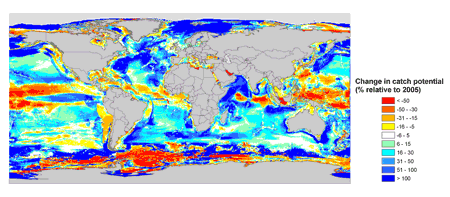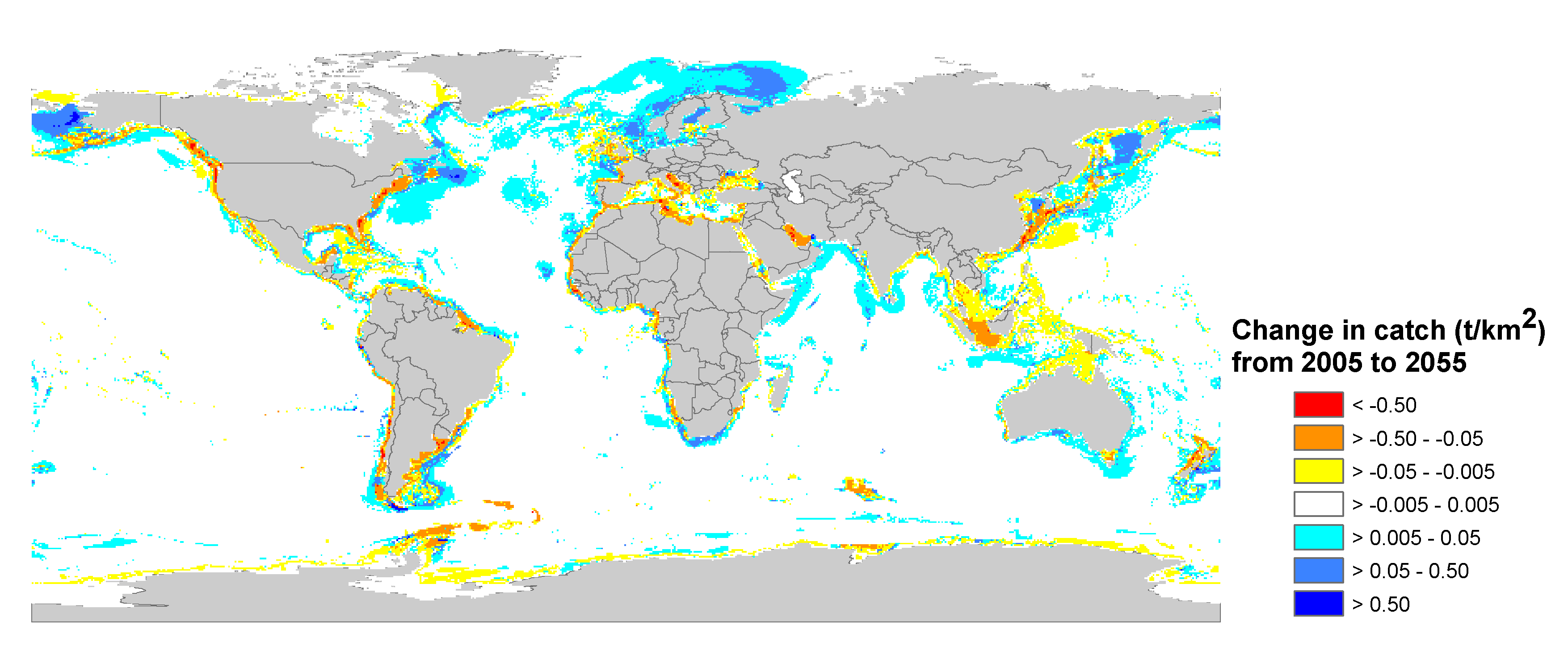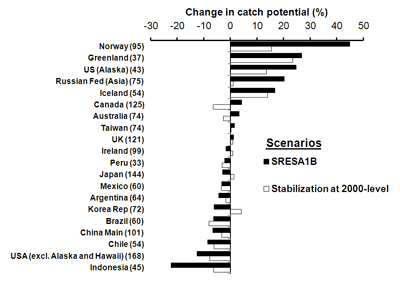Climate Change: Fisheries Impact
Climate change will produce major shifts in productivity of the world’s fisheries, with an average of 30–70% increase in high-latitude regions and a drop of up to 40% in the tropics. Moreover, maximum catch potential declines considerably in the southward margins of semienclosed seas while it increases in poleward tips of continental shelf margins. This will affect ocean food supply throughout the world, particularly in the tropics. Relevant publication: Cheung et al. (2010) “Large-scale redistribution of maximum fisheries catch potential in the global ocean under climate change” Global Change Biology 16:24-35.
Change in maximum catch potential (% change relative to 2005) from 2005 to 2055 in each ½ x ½ degree cell under one of the climate change scenarios described by this study.
The difference in the absolute catch potential (t∙km2) between 2005 and 2055 under one of the climate change scenarios described by this study.
Projected changes in averaged maximum catch potential from 2005 to 2055 by the 20 Exclusive Economic Zone regions with the highest catch in the 2000s. The numbers in parentheses represent the numbers of exploited species included in the analysis. Dark bars represent the climate change scenario where greenhouse gas concentration is doubled by 2100, while white bars represent the scenario where gas levels are stabilized at year 2000 levels.


 High resolution
High resolution High resolution
High resolution High resolution
High resolution